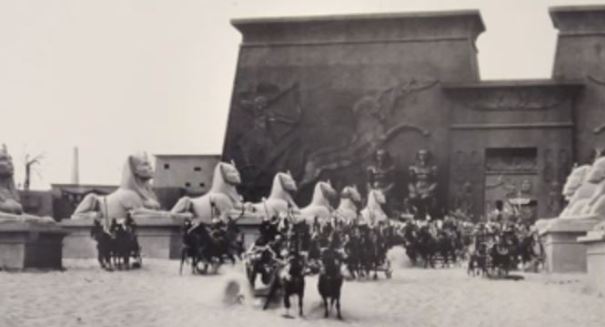
After ninety years hidden in the sands of Guadalupe, California, “Pharaoh’s City” from the movie The Ten Commandments has undergone excavation.
After ninety years hidden in the sands of Guadalupe, California, “Pharaoh’s City” from the movie The Ten Commandments has undergone excavation, Christian Science Monitor reports.
The movie’s director Cecil B. DeMille built the city at a time when movie sets had to be created, not generated. According to KCET, the project involved 1,500 workers recreating an ancient Egyptian metropolis in a project lasting six weeks. Leading up to the gates of “Pharaoh’s City” were four enormous Ramses II statues, as well as 21 sphinxes, roughly 15 feet tall each.
The first excavation took place in the 1990s, when the Guadalupe-Nipomo Dunes Center had archaeologists search the abandoned movie site, finding items such as tobacco tins and cough syrup bottles, as the movie was filmed during prohibition. In 2012, archaeologists discovered the first of many sphinxes. From Oct. 6 to 14 a team headed by Applied EarthWorks archaeologist Kholood Abdo Hintzman slowly excavated the body of a sphinx.
“We’d work during the day, and we’d watch the [three hour] movie at night to figure out what we were finding,” said M. Colleen Hamilton, a historical archaeology program manager and senior historical archaeologist with Applied EarthWorks in California, in an interview with Live Science.
The full-size sphinx from the set of the 1923 silent, black and white blockbuster will be held at the Dunes Center in mid-to-late 2015, along with the head of another reconstructed sphinx, said executive director Doug Jenzen.
It remains to be answered as to why movie director Cecil B. DeMille left the city to be buried in the sand. It is likely that he did not want the set, part of a $1 million project, used by another crew, or that it was infeasible to transport the city back to Los Angeles.
good for FREE WIFI connectivity.